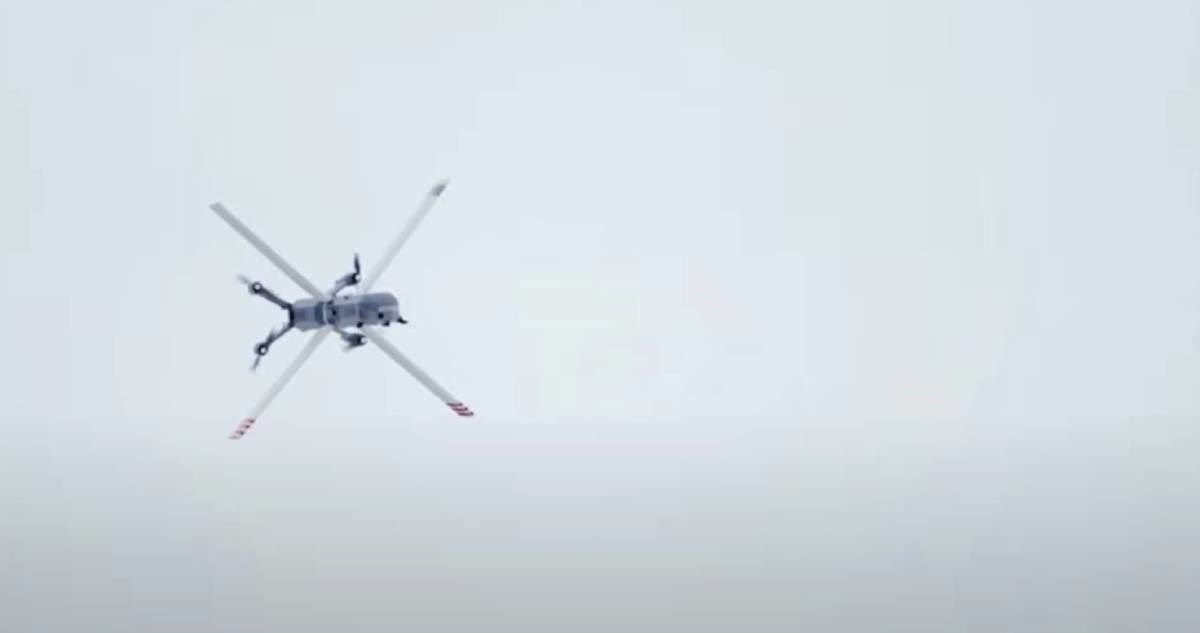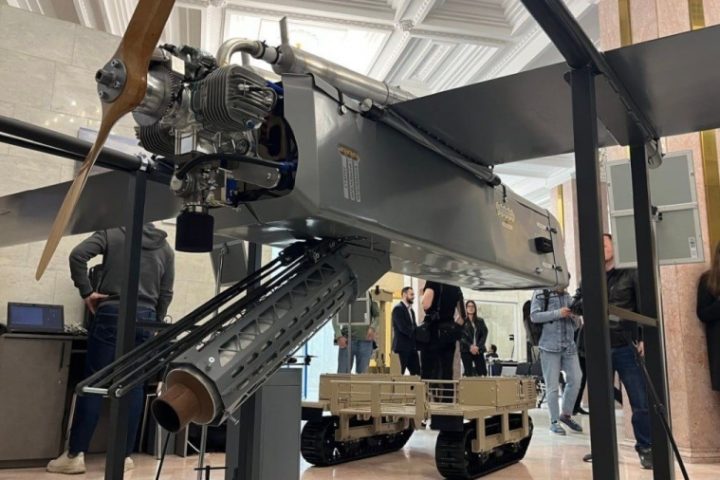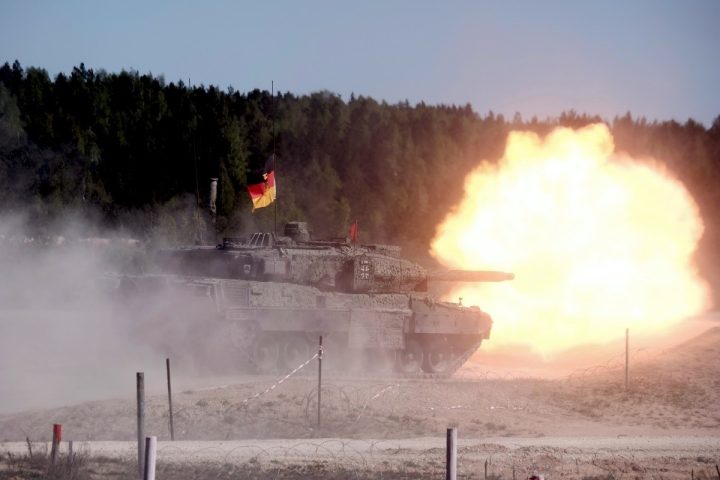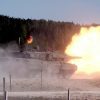Ukrainian special forces have begun deploying a new generation of German-supplied drones—most notably the HF-1 self-guiding UAV—to target and destroy Russian air defense systems more than 50 kilometers behind the front lines. In a twist that seems more DIY than high-tech, the drone’s fuselage is made of plywood—but make no mistake: it’s a precision weapon built for modern warfare.
These drones represent a leap forward in Ukraine’s ability to strike strategic targets while evading Russian detection and electronic countermeasures. Backed by AI technology and unconventional design, they’ve already scored major hits on some of Russia’s most sophisticated equipment.
Precision Strikes on Russian Air Defenses
Recent footage from Russia’s Belgorod region shows Ukrainian HF-1 drones destroying high-value targets, including the Pantsir-S1 short-range air defense system and the Buk-M3 radar unit. These successful strikes were carried out from distances of over 50 kilometers—well beyond the reach of typical line-of-sight weapons.
The HF-1’s endurance allows it to remain airborne for about an hour, with a patrol range of 45–50 kilometers and an extended strike range of up to 100 kilometers when operating on pre-programmed coordinates. According to Ukrainian special forces, this gives them the ability to hit mobile or stationary targets during critical windows—whether during troop movements, staging operations, or at lightly defended logistics hubs.
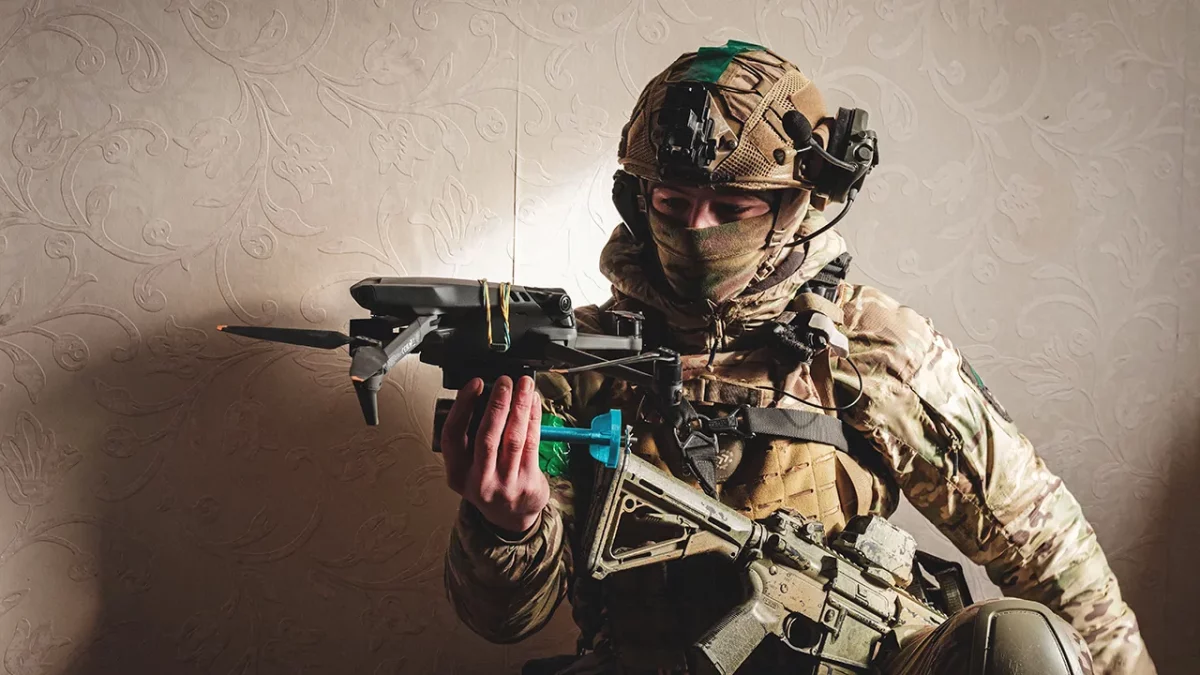
Smart Targeting Meets Low-Tech Stealth
One of the HF-1’s most surprising features is its wooden fuselage. Made from plywood instead of composites or plastics, the frame offers some unique tactical advantages. Wood allows radio waves to pass through more easily, reducing the drone’s radar cross-section. It also acts as a natural thermal insulator, making the UAV harder to detect with infrared or heat-seeking systems.
Despite its rudimentary material, the drone’s internal tech is anything but basic. The HF-1 can be guided manually to designated coordinates, but its real strength lies in its autonomous capabilities. Equipped with an advanced terminal guidance system, it can home in on targets while evading Russian electronic jamming. Embedded artificial intelligence allows it to identify, track, and engage targets independently, even in contested environments.
Next-Gen Drones Already in Production
Looking to build on the HF-1’s battlefield success, drone manufacturer Helsing has already launched mass production of the HX-2—a next-generation model ordered by Ukraine in large numbers. Up to 6,000 of these drones are expected to be delivered.
The HX-2 improves on the HF-1 with a range well beyond 100 kilometers, enhanced loitering time, and AI-powered autonomous target recognition. Notably, it can operate in coordinated swarms, enabling a single operator to unleash multiple drones against dispersed targets or vehicle convoys simultaneously. These capabilities are crucial as Ukraine seeks to overcome a shortage of precision-guided munitions and scale up its deep-strike capacity at a lower cost.
Ukraine Boosts Domestic Production of Switchblade Drones
Alongside new German systems, Ukraine is ramping up domestic production of the U.S.-designed Switchblade 600—a man-portable loitering munition originally developed as a lightweight alternative to the Javelin anti-tank missile.

The Switchblade 600 carries a top-attack warhead, detonating above armored vehicles where their armor is thinnest. With a range between 40–80 kilometers and a flight time of over 40 minutes, these drones have already been used to destroy Russia’s top-line armored platforms, including T-90M tanks and BMPT Terminator fighting vehicles.
Their compact size and portability make them ideal for frontline infantry units, giving even small squads the ability to deliver precision strikes against armor and support assets deep in enemy territory.
A Shifting Battlefield
The emergence of HF-1 and HX-2 drones, combined with Ukraine’s growing fleet of Switchblades, is reshaping warfare on the Eastern Front. What began as an artillery-heavy, grinding conflict rapidly evolved into a battle of drones, AI, and long-range strikes.
By combining advanced Western technology with domestic innovation and unconventional tactics, Ukraine is developing one of the most dynamic drone warfare strategies of the modern era—one plywood drone at a time.


